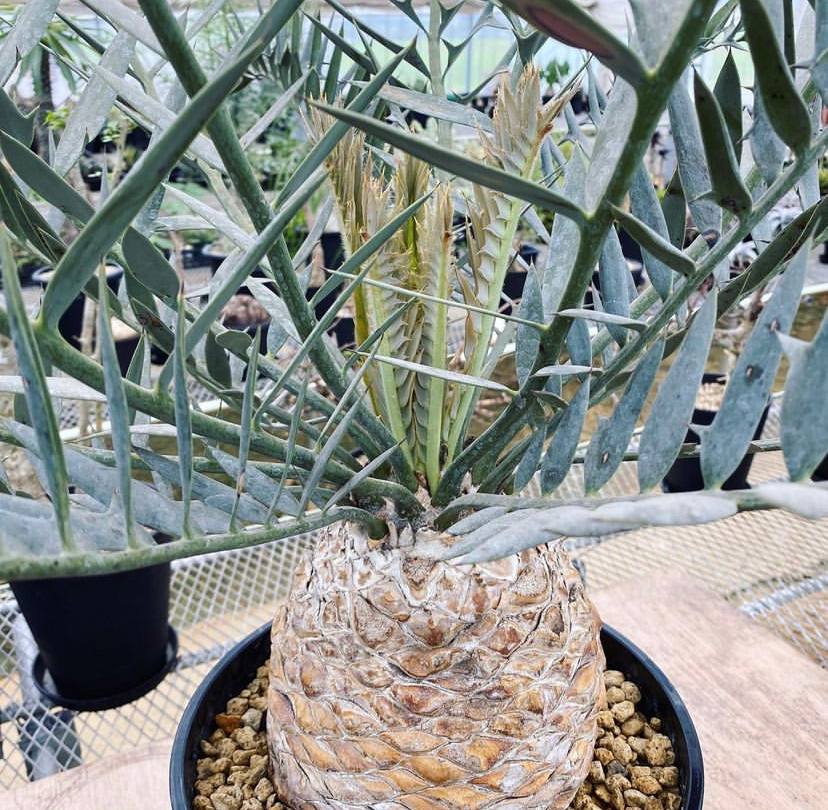The leaves are pinnately compound, growing up to 2 meters (6.5 feet) long, with sharp, spiny leaflets.
Male and female cones are produced on separate plants. The large, cone-like structures can reach over 30 cm (12 inches) in length.
Encephalartos horridus is adapted to survive in hot, dry conditions and can tolerate some frost.
It prefers well-draining, slightly acidic soil and thrives in full sun to partial shade.
Propagation is typically done through seed, as the plants grow very slowly from offsets or pups.
This cycad species is prized by enthusiasts for its impressive size, striking appearance, and rarity in cultivation.
Encephalartos horridus,
the Eastern Cape blue cycad, is a small, low-growing cycad up to 0.9 m high and 0.9 m wide. It is a native of Eastern Cape Province, South Africa, and found in arid shrublands, most commonly on ridges and slopes with shallow soils.
A highly ornamental blue-leaved South African cycad highly prized by plant lovers and collectors, possibly the most popular blue-leaved cycad of all.


























